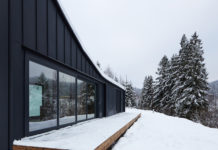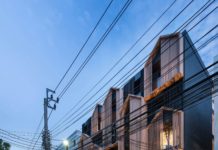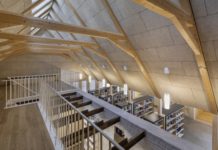Five months enjoying succulent foliage, the remaining seven dry vines on the facade. To give it may not a problem. But in a townhouse or apartment permanent residence once again think, whether such beauty. Maybe there are some other plants for “green walls”?…
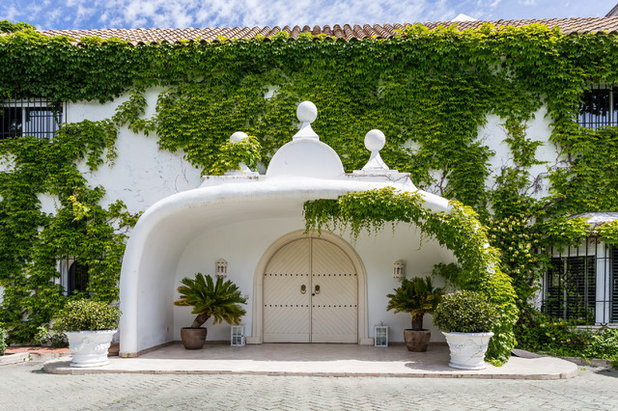
David Calaveras Fotografía
What goals do the “green wall”
► Hide flaws in architecture. For example, when the house is sturdy, but built long ago — the facade looks unappetizing. You can mask this is a factory “veneer” type of hinged panels, it is possible to grow a “green wall”.
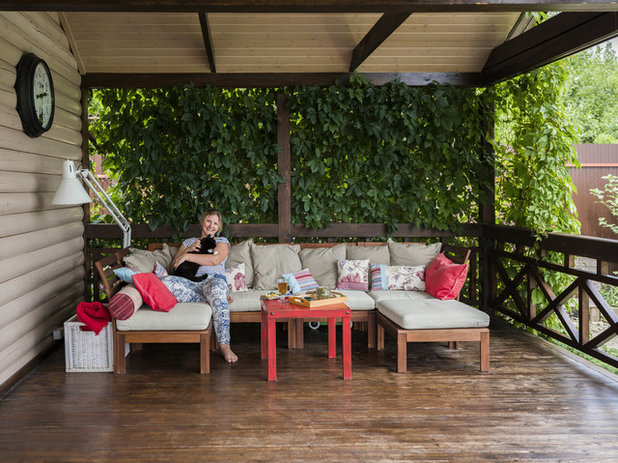
Dina Aleksandrova
► Wall of greenery gives a dense shade, for example, on the veranda.
► Plants retain dust. It happens that the old way was too much dust, since all the neighbors bought cars. 10 years ago was fine, but now you constantly wipe the dust from the window sill.
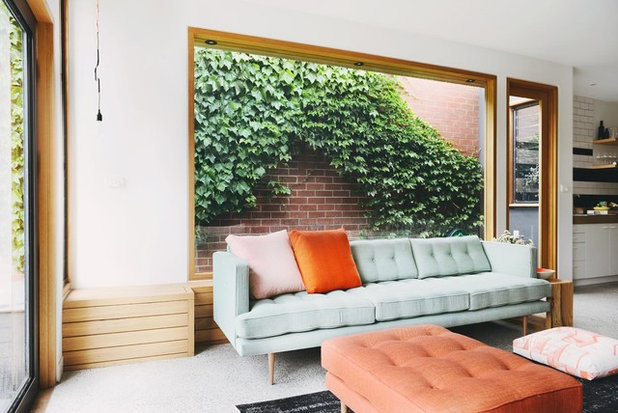
► Provide an opportunity to “green” in the most hopeless situation (see example in the photo — the window against a wall of the neighboring buildings).
► Form a microclimate. If the site is new and the trees have not yet grown, the vines on the facade and / or on the fence help to green the area, to create the right microclimate.
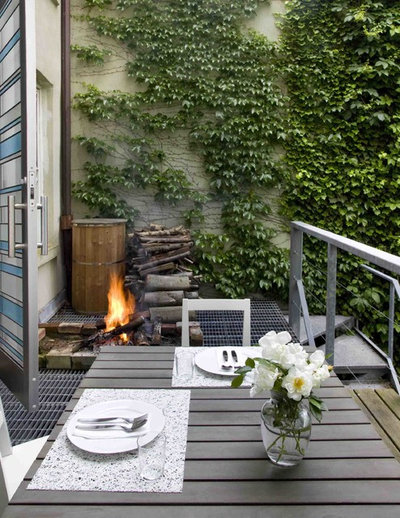
Delson or Sherman Architects pc
► Drown out the noise from the street. “The green wall” is a natural insulator: useful for townhouses on the first line, private homes from the roadway or from the active neighbors at the fence.
► “Slow down” the rainwater. That site doesn’t turn into “rice field” because saragusa rain or a busy township stormwater, and plant walls. Plants actively absorb and evaporate excessive water. You just figure out than a green facade.
AN ARTICLE ABOUT THIS…
► How: to Take excess water from the site
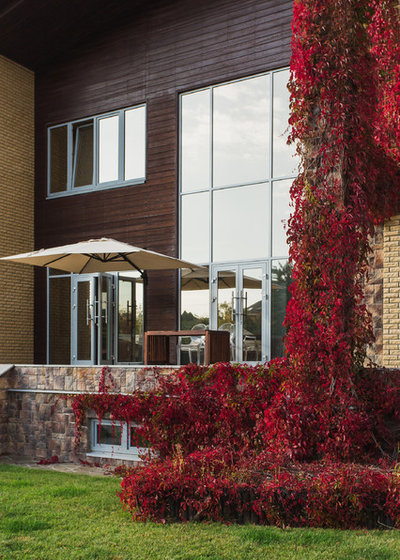
Olga Shangina | Photography
What plants are suitable for “green walls“ in the Russian climate?
Methods of greening facades is very small, the main planting vines. Also appropriate and very beautiful, but require constant care annuals planted in pots. And finally, is gaining popularity as a landscaping “green walls” and the use of mosses. Each has its advantages and disadvantages, as well as important nuances that should be considered in the selection and care of plants.
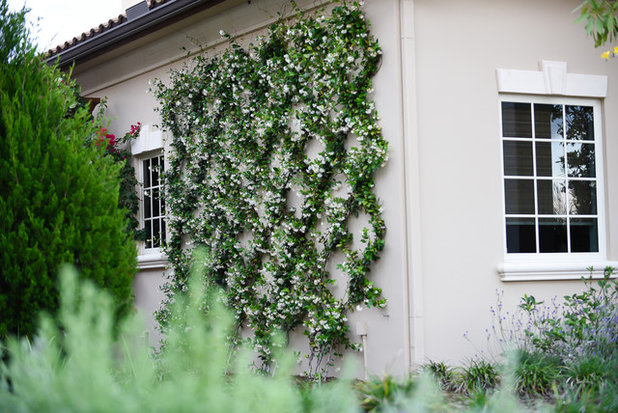
Michael A. Gilkey, Inc.
Photo: trellis with Jasmine. A bold decision, lovely fragrance in the house, but not for the Russian climate
1. VINES
+ Maximum stability and maximum coverage of the facade.
– Up to 7 months of the year in the climate of Central walls will be covered with dry branches. However, such aesthetics in recent times, on the contrary, is valued (recall the natural beds of the most expensive Park in Russia — “the Charge”).
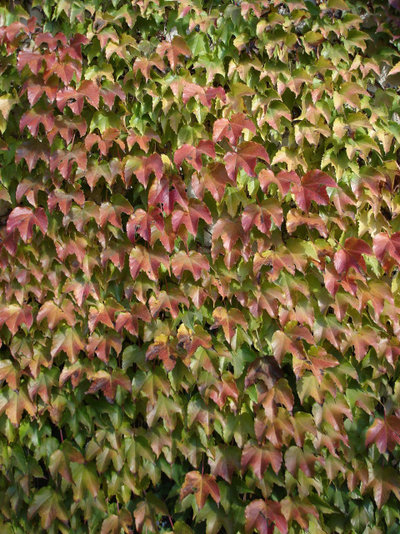
OOO GeoGraffiti
- Pyatilistochkovy parthenocissus hardy or English (Parthenocíssus quinquefolia) is widespread. Attached to the walls of the antennae, the fall becomes bright red.
- Tristany or hederacea parthenocissus (Parthenocíssus tricuspidáta), was cultivated in the far East. Very beautiful, feels good, say, in the Krasnodar Krai and the North freezes; leaves with the arrival of autumn also change color to red.
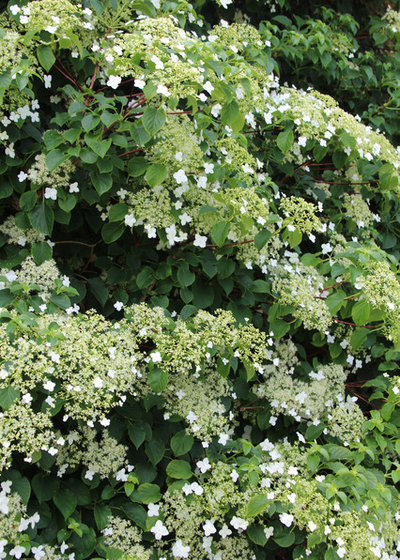
Jane Finlay Garden Design
- The hydrangea (Hydrangea petiolaris) — in the photo. Found in nature in the far East, there are quite frost-resistant varieties, but in severe winters can be frozen before snow falls. From mid-July for about 1.5–2 months a wall of stemmed hydrangeas will bloom white clusters.
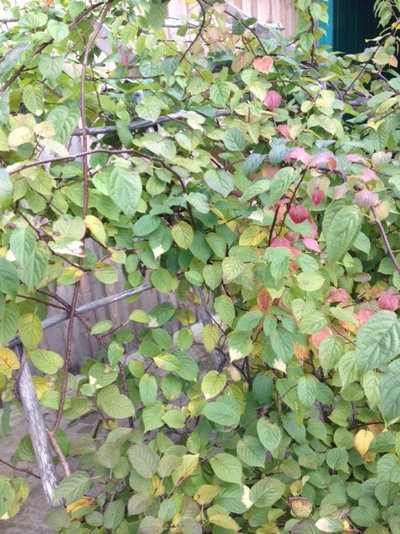
Yana Ivanchenko
- Actinidia kolomikta or slide (Actinídia kolomíktaс) — in the photo. Hardy, but dioecious to be the fruits similar to kiwi, it is necessary to buy male and female seedlings. The plant is interesting because the leaves are changing color — from green become white, then turn pink.
Beautiful plant, but grows slowly.
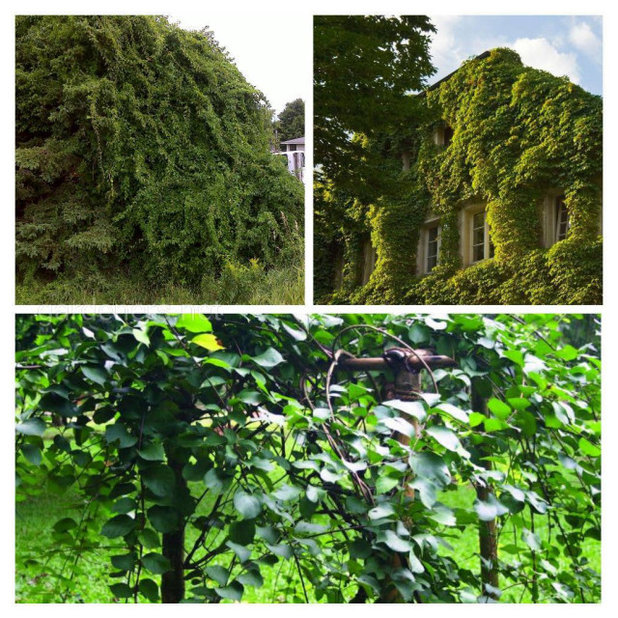
Elena Abrosimova
On the photo: celastrus, illustration from the website ogorodniki.com
- Celastrus or krasnoozersk (Celástrus). There are about 38 species, including winter-hardy. He has a speaking name: this plant is unsafe for wooden facade or not too strong fence. And it definitely need to be protected from living trees, otherwise celastrus maybe to strangle them.
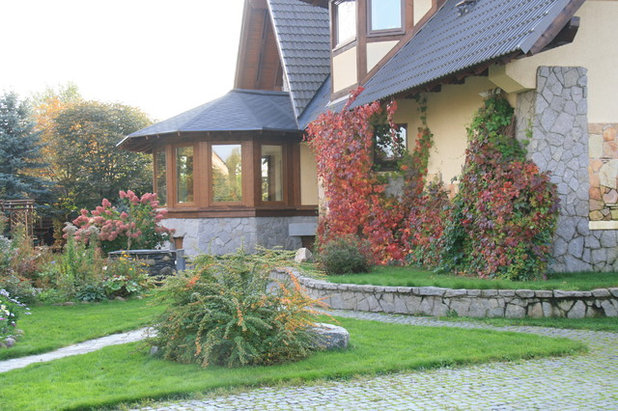
Zubkov”s brothers Architectural workshop
How to plant vines: along the house, close to the wall. If done deep wall drainage, the water will go away and without blind area (optional to do it is not required).
If the deck is already done, it is possible to perform a “tygrysy” (to replace the layer of training under the blind area fertile land, where to land the vine). You can also organize wall pergola.
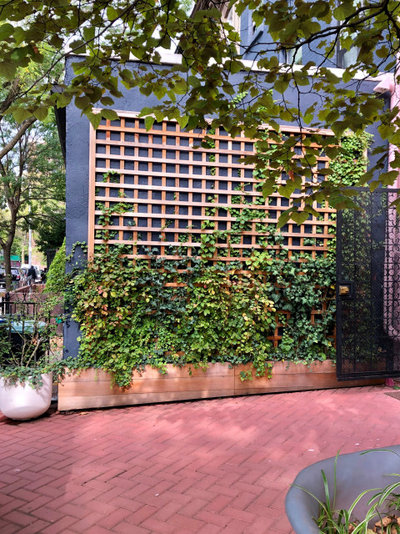
BROOK LANDSCAPE
Fact: In our band to plant perennials, vines in the containers with soil is generally not recommended — the earth in the pots freezes in winter even in the middle lane. Exception — maiden grapes pyatilistochkovy in large pots will be almost neubivaemoy.
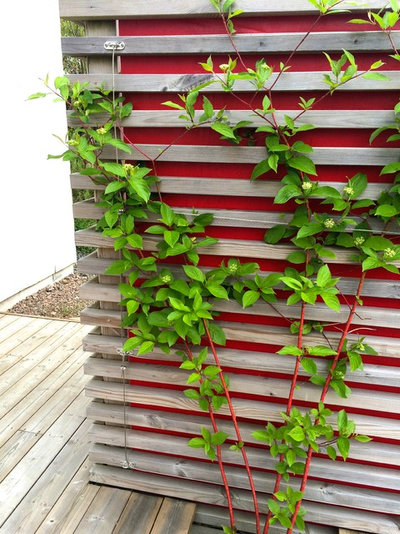
Cattis&Eiras Trädgårdsdesign
How to care: for vines along the front of the house need to put supports. It is best to design them yet at the time of construction of the building, but almost always can be installed on an existing house (except for curtain walls). Design calculations should order the engineers, especially large margin of safety of supports needed drevogubets, Wisteria and Actinidia.
If you have cats, it is important to protect the roots of Actinidia (experience, cats are indifferent to them and sometimes shoots chewed off a finger thick).
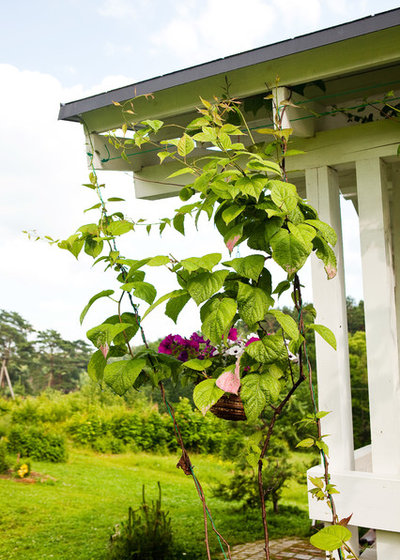
Artecology
Vines grow rather quickly. Maybe after some time you will need to remove part of the overgrown green stuff, cutting off the shoots drooping and vestiga openings around Windows.
Watering maiden grapes is rarely necessary even in the heat. Diseases and pests also not particularly dangerous. But cleaning up after him a lot: on the one hand, it collects dust, preventing it getting into the house, with another — a lot of insects on the maiden grapes, dry leaves, etc. can complicate the care of the house.
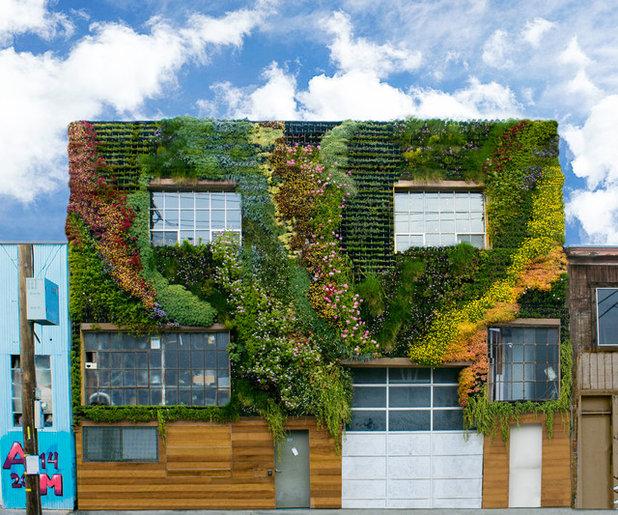
Planted Design
2. VERTICAL GARDENING (PLANTS IN POTS)
+ You can plant a variety of plants in pots and make one composition. Get less monotone than vines. This option works great in France and in southern Germany. For the Moscow region we found plants that would retain the viability and decorativeness with our winter. Because it only about the annuals, which by the end of the season is thrown away.
– Care is more costly than in the case of vines; dying plants must be constantly replaced. After wintering the plants have to be planted again.
– Container gardening is expensive, and therefore rarely used and certainly not on all volume of the building, most of it is about the only accent wall.
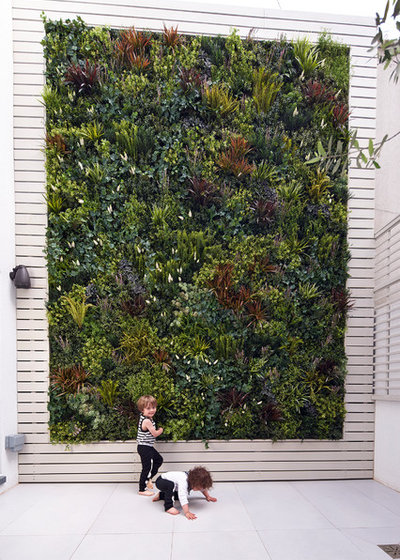
VistaGreen
ON THE SUBJECT…
- How to choose fotomodel for vertical garden
- How to make a vertical garden with their hands in the garden and dacha
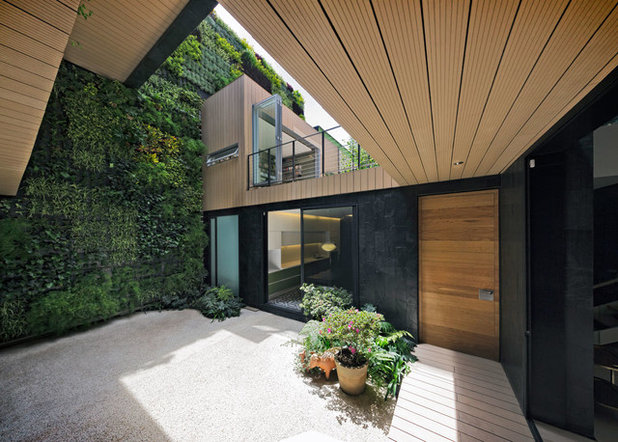
PAUL CREMOUX studio
Photo: Mexican project — more than 4,000 plants on the wall
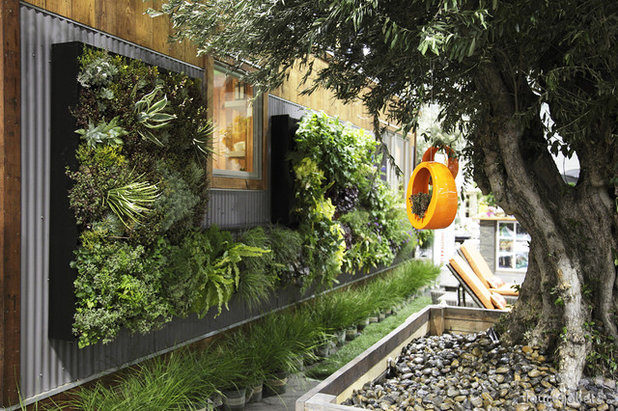
Shades Of Green Landscape Architecture
Will fit: Any annuals that you like.
How to plant: request the project container gardening — planters must be securely attached to the facade; plus should be carefully calculated the load on the facade.
How to care: As the usual annuals. If the container is to be mounted on high altitude, you can call landshaftnomu with lifts. Because of difficulties with the departure of container gardening is usually used on small fragments of porches, terraces, loggias.
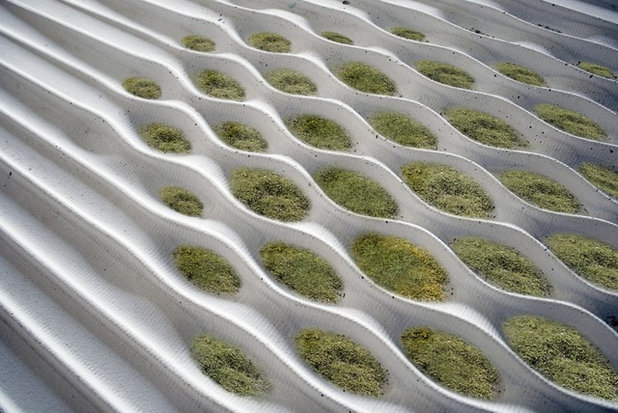
BiotA Lab
3. MOSS ON EXTERIOR PANELS
+ Moss is growing in height, and to the sides so that it will well cover the walls.
+ Moss is fixed on any ground (wood, stones, ceramics, concrete example in photo).
+ Moss is not needed and even harmful fertile soil.
+ We hope that soon it will be possible to order a ready-made panel from the moss and fasten them to the walls. For successful growth it is necessary to exclude direct sunlight should not grow moss on the South walls of buildings. Also highly desirable permanent moisture, in dry climates, moss will not grow.
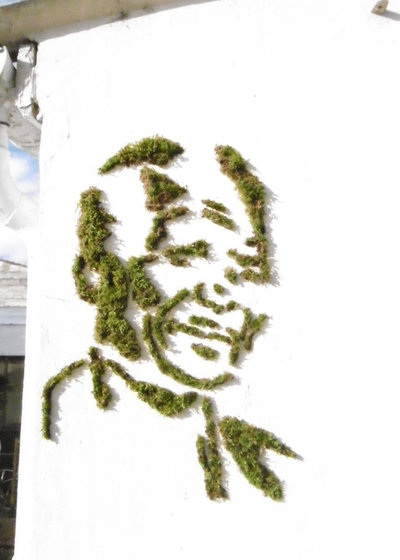
Photo: the portrait of Nelson Mandela from the moss on the facade of the house, by françois Roberter (François Robertière)
– Does not tolerate full shade and the sun is too bright you need to it has been lit in the morning or evening, and the day is shadowed (that is, walls made of moss is not suitable if you have a plot of small adult trees). Not suitable for South facade.
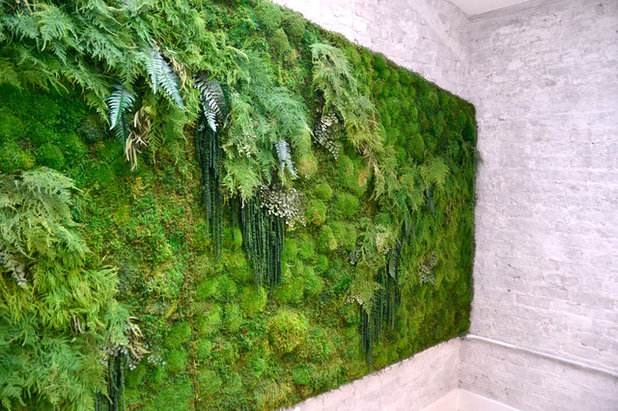
Monica Lee
Fit: Dicranum (Dicranum). There are a huge number of species of moss, occupying various ecological niches with varying stability and degree of decoration — the possibilities of moss in landscaping facades just starting to learn.
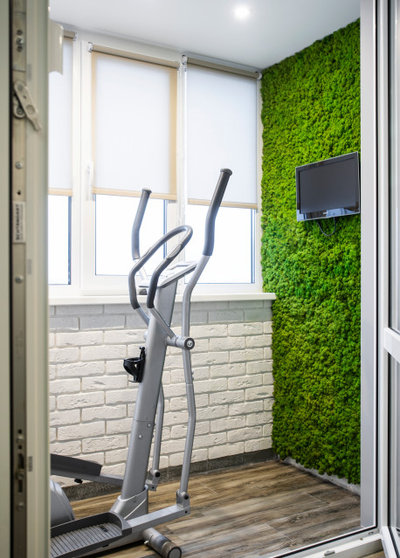
Valrimont
Important: Most of advertising on the Internet for “green wall moss” offers solutions for the interior — on some of the panels are stable, already lifeless moss, he “preserved” with the help of special solutions. It is convenient and safe for use in the premises (no need to water, do not infest insects), but is completely useless for greening exterior walls. Due to frost and rain this moss just lose their appeal, and with the function of delay excess water will not cope at all.
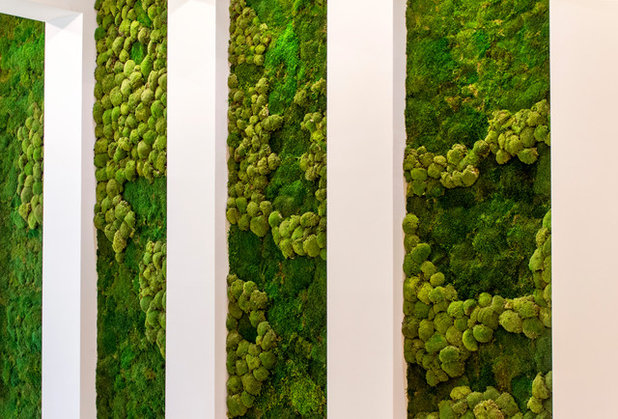
Vita Verde
How to plant: the Technology of growing moss on vertical surfaces not sufficiently elaborated. If the wall is not very high, there is no direct southern sun during the period of high humidity, try to put the spores of the moss on the wall: take the moss growing in similar conditions, grind it into dust, apply a special spray and wait.
How to care: Moss grown in outdoor conditions, watering is not necessary. Some gardeners suggest kefir to speed up reproduction and growth of mosses. But such an effect of kefir on the moss — a myth! After several treatments yogurt the moss will die. But at the initial stage, the spores to get a better hold on the surface, a single watering kefir or yogurt can help. Importantly, it has been the chosen place — not too hot, not too dry because of the wind, and not absolute shade.
ON THE SUBJECT…
The world of design: Natural moss and how to use it
IT’S YOUR TURN…
Have your home “green facade”? Share in the comments: what plants were planted, what unexpected problems did you encounter and how to solve them



